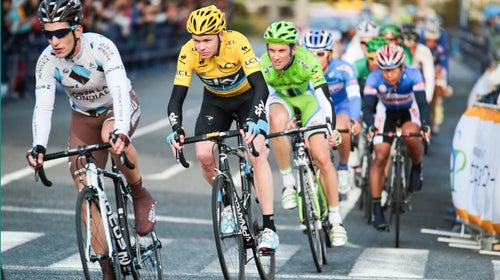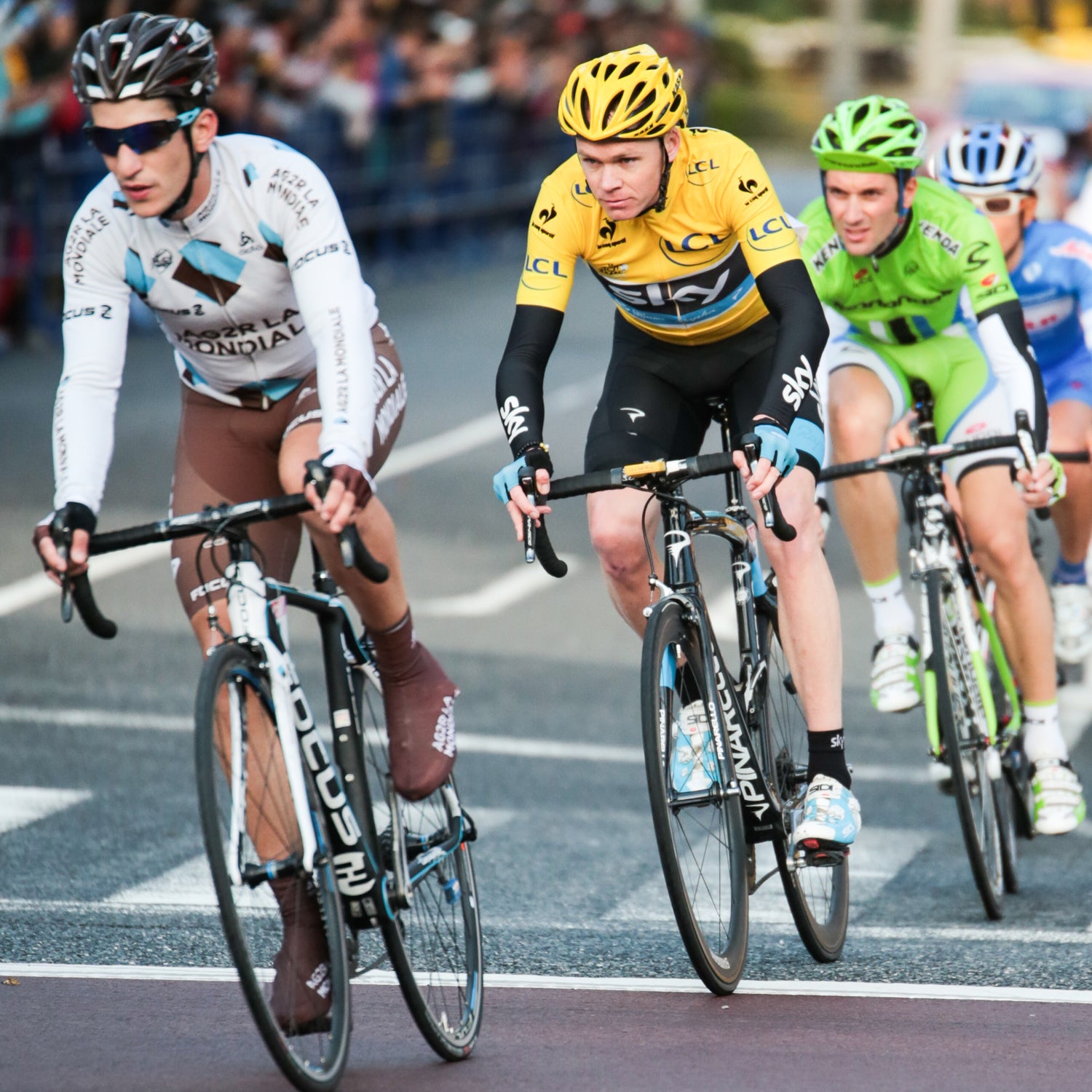This year’s Tour de France has proven mysterious to even the most knowledgeable cycling fanatics, with both pre-Tour favorites Alberto Contador and Chris Froome out of the race due to heavy crashes. So we imagine that to the outsider, the race must seem almost incomprehensible. Presenting a beginner’s guide to the world’s most important cycling stage race.
#1: Does the race take place exclusively in France?��
Nope. It often starts in a nearby country, a tradition that dates to 1954, when the race set off in Amsterdam. ,��it began with three days in England, starting in Yorkshire and ending in London.
The Tour frequently passes into neighboring countries throughout the event, especially the mountains of Italy and Spain. This year’s edition also swung through Belgium for what became a contentious and slippery day on the cobbles.
#2: How many racers compete?
A total of 198 racers line up at the start. There are 22 teams, with nine riders per team. Throughout the event, racers drop out because of injuries. Riders must also finish within a certain percentage of time of the stage winner or they’ll be eliminated from the race. The percentage of time varies, depending on the difficulty of the stage.
The race jury can grant exceptions to riders who don’t make the time cut. And if more than 20 percent of riders miss the time limit, generally they are exempted. That’s why, on mountainous stages, you’ll often see a large group of riders, known as the autobus, group together at the back of the field—it’s safety in numbers.
#3: How does this stage racing stuff work? How do you win?
Each rider is timed on every one of the 21 stages. A rider’s time is added up from stage to stage for an overall elapsed time. The racer with the fastest elapsed time over three weeks wins the race.
So it’s possible to lose a lot of time one day, make it up throughout the length of the race, and still win. Maybe the best example came in 1958, when Frenchman Charly Gaul started the final day in the Alps 15 minutes behind but, thanks to atrocious weather, made up all but 28 seconds of that time. He went on to win the overall.
#4: Is it true that a racer can win the overall without ever winning a stage?
Yes. While it’s considered good style to win at least one stage en route to an overall win, it’s not a requirement. All that’s necessary is a racer finish with the fastest elapsed time over three weeks.��
Only six racers in 101 editions of the race have won the Tour without winning a stage. Spaniard Óscar Pereiro did it most recently in 2006, while three-time Tour champ Greg Lemond took his final victory in 1990 without a stage win.
#5: Are there time bonuses for winning a stage?
Through 2008, time bonuses were awarded for both pre-set sprint intervals along a day’s course and for the fastest finishers. Intermediate sprints earned the top three racers 6, 4, and 2 seconds, respectively, while the first three racers to finish a stage took 20-, 12-, and eight-second bonuses.
Race director Christian Prudhomme eliminated the bonuses in 2009, arguing that the true winner of the race should be person who clocks the actual fastest elapsed time. Both the Giro d’Italia and Vuelta a España still award bonuses, and some argue that the extra incentives make for more exciting races.��
#6: What’s with all the special jerseys?
The yellow jersey, or maillot jaune in French, indicates the rider with the fastest elapsed overall time in the race at any given point during the Tour. It is awarded after each day’s finish. If a racer wins a stage but isn’t the overall leader, he is awarded a maillot jaune for his win, but he won’t get to wear it the next day, the overall leader will.��
Concurrent to the overall race, there are three additional competitions in the Tour. The green jersey, or maillot vert, is awarded based on a point system for winning sprint stages. The racer who wears the polka dot jersey, or maillot à pois, is called the King of the Mountains. He earns the jersey by accruing points for reaching the tops of designated mountains first. And the young rider classification is awarded to the racer under 26 with the fastest elapsed time, who wears the white jersey, or maillot blanc.��
#7: Is the course the same every year? How do they decide on the route?
The course, often referred to as the parcours, changes every year, though given the long history of the race, towns and climbs cycle in and out from year to year. Towns bid to host race starts and finishes, which can bring in great revenue because of the influx of teams and spectators. The course is announced each fall, usually in October, in a gala celebration.
#8: How fast do the racers go?
On flats, the peloton moves along at around 30 miles per hour. On mountain stages, racers can descend in excess of 60 miles per hour. The fastest Tour de France on record was in 2005, in which Lance Armstrong averaged 25.882 miles per hour over the 2,241-mile course.
#9: Why do they shave their legs?
Arguably the biggest reason racers shave is because, in case of a crash, it’s easier to clean the wounds with no hair. Shaved legs are also said to be more aerodynamic, and though some people claim the differences are insignificant, Specialized recently refuted that. And if they’re honest, most cyclists will tell you shaving is also about identity.
#10: How do they go to the toilet?
Given that Tour riders can spend five or more hours a day in the saddle, it’s reasonable to wonder how they take care of business. Generally, the peloton will agree to stop somewhere discreet alongside the road for a “nature break,” when riders can go without being left behind. In some cases, if the race is on, riders will just go from the saddle, with other racers taking care to stay out of the way.
#11: How much money do you get if you win?
Winners of each day’s stage are awarded €22,500 (~$30,000), while the team time trial pays €25,000 (~$34,000). Overall winners of the green jersey and polka dot jersey take home €25,000 each, while the overall winner of the white jersey gets €20,000 ($27,000). There’s also an award for the most aggressive rider (€20,000), which is decided by a jury of eight cycling specialists, and for the fastest overall team (€50,000).
The grand prize for the racer who takes top honors at the Tour de France is €450,000 ($610,000), though traditionally he will share it among his team.


